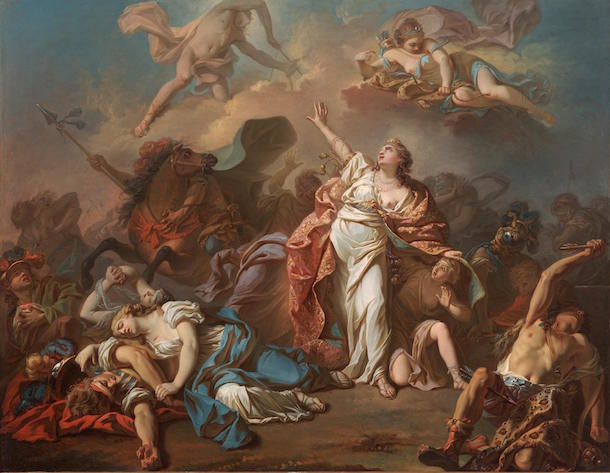Neoclassicism
"The one way for us to become great, perhaps inimitable, is by imitating the ancients."
Neoclassicism is the 18th and 19th century movement that developed in Europe as a reaction to the excesses of Baroque and Rococo styles that were dominant in the previous era. The movement sought to return to the classical beauty and magnificence of the Ancient Greece and the Roman Empire. Neoclassical art is based on simplicity and symmetry and takes its inspiration from the German art historian Johann Joachim Winckelmann who believed that art should aim at the ideal forms and beauty of Greek art. Explore the Neoclassicism movement by starting from What is Neoclassicism? and browse our curated list of artworks from neoclassicism painters such as Jacques-Louis David, Jean-Auguste-Dominique Ingres and others.
History of Neoclassicism
Neoclassicism is a revival of the classical past. It developed in Europe in the 18th century when artists began to imitate Greek and Roman antiquity and painters of the Renaissance as a reaction to the excessive style of Baroque and Rococo. At first Neoclassicism developed in Rome at the beginning of the 18th century, but then it spread all over Europe partly due to the Grand Tour; the trip in which European students travelled around the continent. At that moment great collections of antiquities began to be discovered and revaluated. These discoveries, such as the paintings and mosaics found at the excavations of Pompeii and Herculaneum in 1738, increased artistic fascination and curiosity for antiquity. Artists then according to Winckelmann began to study Greek and Roman art, using this new knowledge of the past in their art, creating their own “new" classical style.
The neoclassical movement influenced decorative and visual arts, literature, theatre, music and architecture and it continued until the early 19th century, when it began to compete with another artistic movement, Romanticism. Neoclassicism was also an important movement in the United States. American Neoclassicism took inspiration from the ancient civilizations of Rome and Greece both for politics as well as for the architecture. In the United States ideals and principles have inspired neoclassical buildings and constructions. Washington, D.C. is still decorated with these facades of white marble, imitations of ancient monuments, and portraits of American presidents are depicted and carved in the manner of Roman emperors.
Text by Cristina Motta
